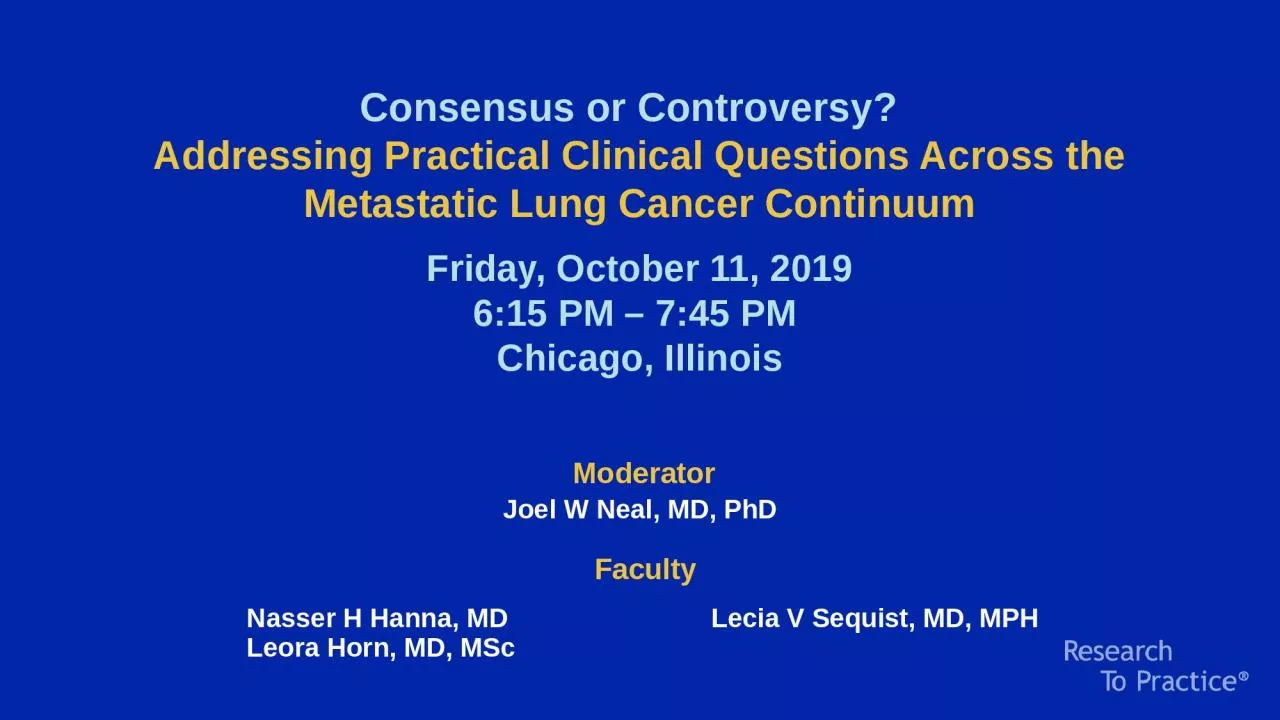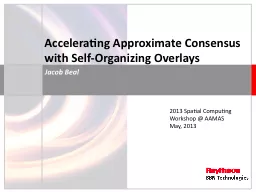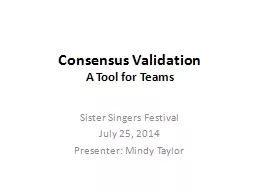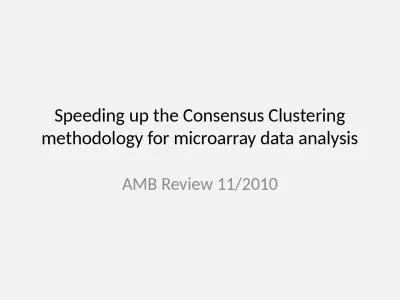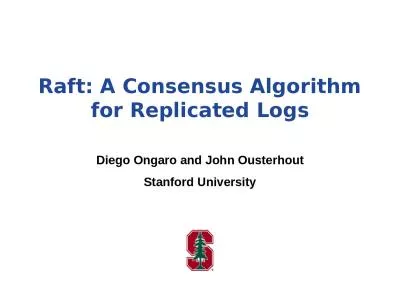PPT-Consensus or Controversy?
Author : okelly | Published Date : 2024-01-29
Addressing Practical Clinical Questions Across the Metastatic Lung Cancer Continuum Friday October 11 2019 615 PM 745 PM Chicago Illinois Faculty Moderator Joel
Presentation Embed Code
Download Presentation
Download Presentation The PPT/PDF document "Consensus or Controversy? " is the property of its rightful owner. Permission is granted to download and print the materials on this website for personal, non-commercial use only, and to display it on your personal computer provided you do not modify the materials and that you retain all copyright notices contained in the materials. By downloading content from our website, you accept the terms of this agreement.
Consensus or Controversy? : Transcript
Download Rules Of Document
"Consensus or Controversy? "The content belongs to its owner. You may download and print it for personal use, without modification, and keep all copyright notices. By downloading, you agree to these terms.
Related Documents

